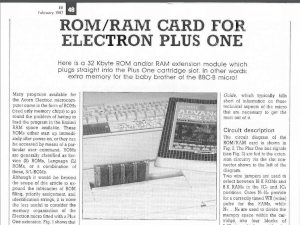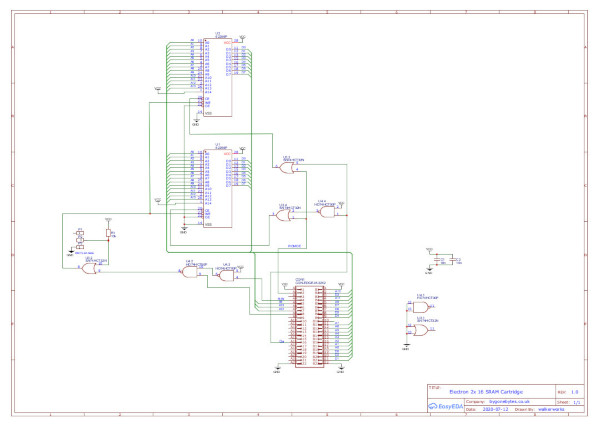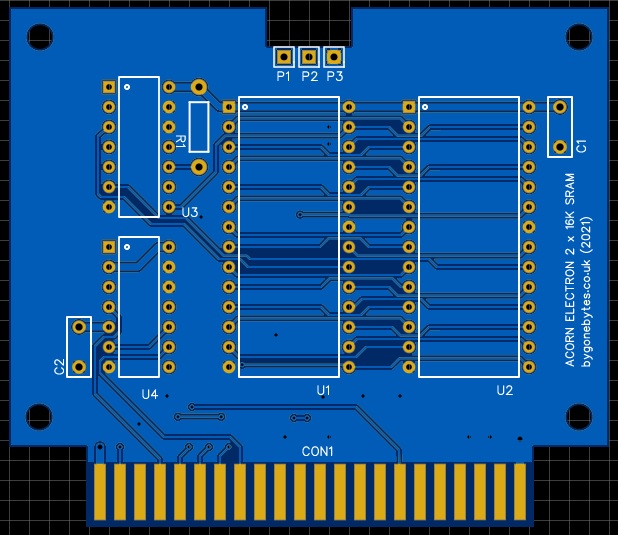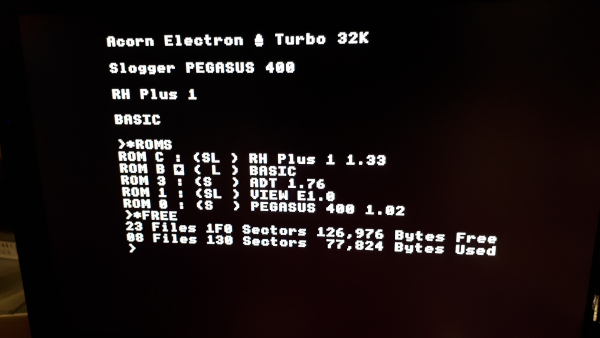
Acorn Electron Sideways RAM Cartridge
EasyEDA Project Page - Sideways RAM Cartridge
Whilst going through some old computer documentation I came across a battered photocopy of an Elektor Electronics project that I was going to build back in the day. The project
was published in the February 1987 issue of the magazine which can be downloaded here. The magazine article
covers the circuit description starting at page 48.
Now 34 years later I finally got the chance to build this project and as you'd expect technology has moved on with 8K SRAM chips becoming harder to find so I replaced them with 32K SRAM chips
(I also had quite a few spare!).
Only half of each 32K is used leaving the cartridge with the same capacity as the original design - possibly not the most efficient use of the memory chips!
I redrew the circuit taking into account the different RAM chips and added a 'write protect' switch. I then designed a PCB layout and sent off for a prototype board to be produced.

The final circuit diagram

The Prototype PCB

The prototype PCB assembled and working. Testing using the LS family of logic chips for U3 & 4 didn't work so I changed them for the HC family. This worked reliably in both the Plus 1 and the Minus
1 cartridge slots. I would prefer to use the HCT family so will try this out in the coming days.

The final layout with the links removed as they were only used for prototype options.
Checking the Sideways RAM in the Plus 1 and Minus 1
Checking the Sideways RAM involved plugging the cartridge into a slot of the Plus or Minus 1, check the Electron detects the RAM with the *ROMS command, loading a ROM image with the *SRLOAD command
then check that it has loaded with *ROMS. Finally check the program runs from the Sideways RAM.

Checking the RAM is detected, loading and image and checking that it has loaded OK.

Issuing a command that is only in the Sideways RAM, in this case *FREE. The response lets you know how much of the disc has been used and how much free space there is.

The Sideways RAM plugged in the near slot of the Plus 1.

The Sideways RAM plugged in the middle slot of the Minus 1.

Cases made and with the Sideways RAM installed.
